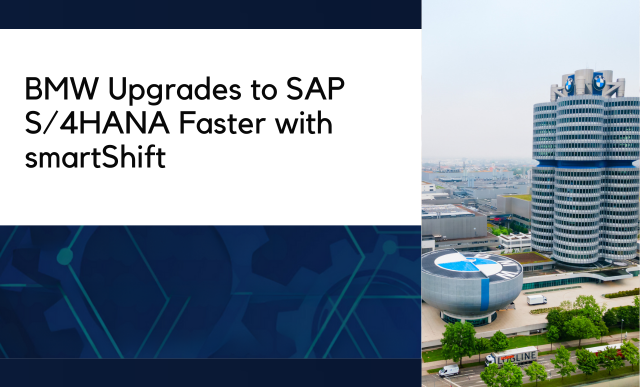Automated Impact Analysis Can Cut SAP S/4HANA Move Costs
By Fred Donovan, Senior Editor, SAPinsider
Panaya’s Director of Product Management Oren Peleg says that organizations can reduce the costs of their SAP S/4HANA implementation by using automated impact analysis supported by artificial intelligence (AI) to limit the scope of conversion tasks.
A recent report by Panaya, Mega Analysis for SAP S/4HANA, finds that close to half of conversion tasks performed during an SAP S/4HANA transition are for objects that aren’t used. Eliminating these objects from the project will reduce both the time needed for conversion and the overall project cost.
Explore related questions
Panaya’s analysis also shows that one-third of potential conversion tasks have a low impact on the business, so they can potentially be “scoped out” of the conversion. “There are different levels of conversion task priorities; at Panaya we rate them from low to medium to high. The low impact ones are usually things related to information and tasks, which are not ‘must do’ during the conversion itself,” Peleg observes.
Overall, Panaya notes that organizations can reduce their conversion task scope by nearly 40% using AI-based scoping. When adding auto code corrections on top, the effort can be reduced even more and result in up to a 60% savings in total effort.
Thirty percent of impacted points of entry into business operations, such as SAP transactions, reports, interfaces and so on, are related to financial and controlling modules. Another 20% of affected business entry points are related to material management, logistics, and production planning modules.
Planning Is Crucial to Reduce Risks
In addition to the risk due to the number of conversion tasks, the move to SAP S/4HANA can also be risky because of the complexity involved. To do it successfully, you need the right plan and the right tools.
“You need to plan upfront and look into the details. It’s a big project and a risky one,” says Peleg.
The main risk among several, according to Peleg, is encountering problems that you did not anticipate after going live. “There are plenty of examples of companies moving to SAP S/4HANA without fully understanding the impact on their business, and they suffered financial losses and customer churn,” he relates.
SAPinsider’s Vice President and Research Director Robert Holland say that SAPinsider’s research supports this need to educate business teams on the impact of the move. The 2021 Deployment Approaches for SAP S/4HANA Benchmark Report showed that more than three-quarters of respondents said that educating users on the capabilities of SAP S/4HANA was important or very important to their deployment. “Understanding these capabilities can be difficult because organizations struggle to picture how this solution is going to work on a day-to-day basis and how it’s going to impact their processes.”
Peleg cites other risks making the move to SAP S/4HANA, such as missing the project go-live date and the overall cost. Usually, projects are planned with specific downtime scheduled. If a company misses a go-live date, that will cause significant delays and additional expenses. And, if a company isn’t clear in advance what it needs for the project, it risks going over budget. For large companies, this can run into millions of dollars.
Another challenge of transitioning to SAP S/4HANA is moving to SAP’s in-memory database, SAP HANA. To move from any database to SAP HANA requires conversion tasks and performance tuning to utilize SAP’s high-performance database fully,” Peleg says. “If you keep your code as it is, you will not utilize this very sophisticated database,” he adds.
Custom Code Makes Up More than One-Third of Conversion Tasks
More than one-third of the overall conversion tasks in the project are related to custom code and routines. SAP customers customize their systems and modify configurations to ensure the business processes in their ERP system meet their needs.
Holland observes that “one of the things that have provided a huge amount of flexibility for SAP systems in the past is that you can pretty much write whatever code you want to achieve what you need. But one of the problems with putting customized code in place is that it’s harder to upgrade because every time you upgrade, you potentially break that customization that’s in place.”
In addition, SAP S/4HANA provides automation, which is much more effective in a standardized environment. Thus, many of those doing an SAP S/4HANA deployment are looking to either eliminate or significantly streamline the amount of custom code used in their system so that they can fully leverage the automation capabilities available in the new environment, Holland adds.
Impact Analysis Can Help You Prepare
Panaya can help organizations with their SAP S/4HANA transition, says Peleg, by examining SAP systems inside and out: SAP customers’ standard code being changed and the custom code modifications that need to be done.
Panaya provides a solution that is tailored to the customer’s own system and usage, Peleg says. Panaya’s Change Intelligence for SAP S/4HANA works across the entire SAP S/4HANA journey: from evaluation of the implementation to post-implementation go-live and ongoing activities, he notes.
The company’s solution covers more than 70 different types of tasks and corrections and incorporates SAP tools data output into its tools and analysis, providing many more capabilities and holistic views on top of those tools.
Peleg describes Panaya’s impact analysis as an engine that analyzes the effect of an SAP ECC or SAP S/4HANA upgrade or SAP S/4HANA system conversion to show what will break, what will change, what needs to be fixed and how, and what should be tested.
He explains that customers need to validate the business processes during the testing phase and then how to manage and handle defects, including testing with multiple business users. Often, Panaya works with multinational companies with locations around the world. These companies, says Peleg, need to synchronize their business process testing among globally dispersed business users. Panaya’s testing capabilities advertise a way for business users to perform user acceptance testing cycles either from the office or home without a major impact on their daily work.
What Does This Mean for SAPinsiders
- More companies are making the move to SAP S/4HANA. Digital transformation is essential these days, especially with the COVID-19 pandemic situation. Recent SAPinsider research found that a majority of respondents reported being somewhere in the process of moving to SAP S/4HANA, whether they are currently using it, implementing it, evaluating the business case, or running proof of concepts or pilots. Only 23% currently have no plans to migrate to SAP S/4HANA. This data indicates that you need to prepare for the journey, regardless of what phase you are in.
- Before you move to SAP S/4HANA, focus on getting business engagement and buy-in from the teams that will be most impacted by the conversion. According to Panaya, the most impacted business entry points are those related to financial and controlling modules and material management, logistics, and production planning modules.
- Scope your conversion tasks to prioritize which tasks need to be done immediately and which can wait or be dropped. An SAP S/4HANA transition can have thousands or even tens of thousands of conversion tasks that impact your business processes. Effective scoping can mean the difference between success and failure.




